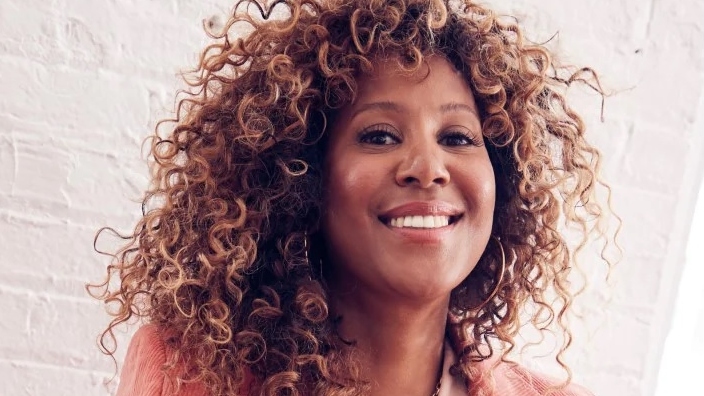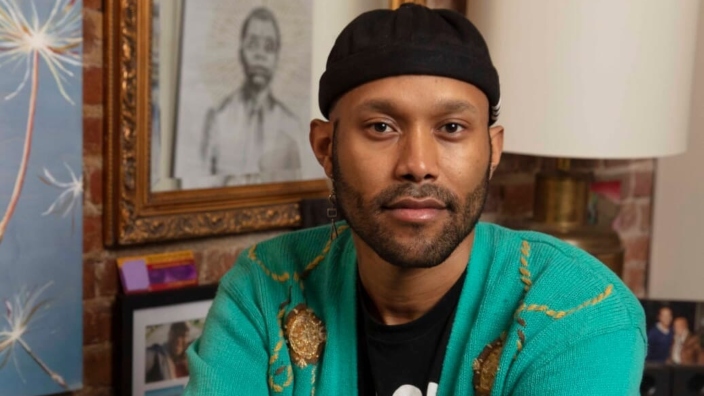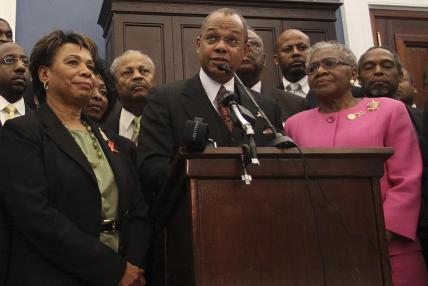Sade Lythcott and Jonathan McCrory of National Black Theatre on Black representation, ownership and transformation in American theater
Prepping for its 55th season, the National Black Theatre continues to shake up and empower the Black American theater space.
Over 50 years after its creation, the National Black Theatre continues to innovate, shake up and empower the Black American theater space. Ahead of a landmark season and the launch of a historic mixed-use building, NBT Chief Executive Officer Sade Lythcott, and Artistic Director Jonathan McCrory sat down with theGrio to underscore the evergreen mission to produce Black theatre, discuss the upcoming season, hopes for the community they serve and the importance not only of Black representation in theatrical spaces, but ownership as well.
Founded by Dr. Barbara Ann Teer in 1968, National Black Theatre is the longest-running Black theater in New York City, residing right in the heart of Harlem. Its core mission, per its official site, is “to be the premier producer of transformative theatre — theatre that enhances African American cultural identity by telling authentic, autonomous, multifaceted stories of the Black experience.”

Lythcott, the daughter of Teer, continues to uphold these values, telling us her mother knew “the most powerful form of change was storytelling” and saw a need for Black communities to focus not only on simple representation, but to see themselves “reflected back to them through authentic stories of Black lifestyle.”
“It was really clear from the founding principle and mission of the work of the National Black Theatre that we were not only just awakening the national consciousness, but that we were awakening a revolution of love and healing through our own communities first,” Lythcott continued. “I think Black folks have been shaping all culture since the beginning of time, and it is that secret ‘soul force,’ the magic and mystery of ‘soul,’ that is housed in our authentic stories that really are what National Black Theatre is committed to unleashing.”
One of NBT’s approaches is what they describe as “wholistic care” inside theatrical spaces.
“Yes, there is before-care,” McCrory explained, “but what does after-care look like? After someone has experienced the work, how are we making sure that we are tending to the hearts and minds of the individual?”
Through “wholistic producing,” they focus on highlighting social issues of our time through the art itself, lobby exhibitions to help audience members engage with concepts before experiencing the project and post-show conversations to help co-create community.
“How can we use our voices to teach each other and create a new piece of art by the time it’s done?” McCrory wondered. “How do we advance the art with our own autonomy and by our own body presence?”

Various events, including sonic meditation installations, dance parties, and more, also fill out their multiple ways of nurturing the community. NBT even offers small-business support, entrepreneurial support and donation of their spaces.
Lythcott asserted that they see themselves as their own “ecosystem of Black liberation in service to the commitment of all our transformation when we fall in love with the truths of ourselves.”
“She [Dr. Teer] was well aware of the power of community outside of the public narrative around what the Black community was,” Lythcott explained. “We’re building this extraordinary theater of the future on that holy ground of 125th Street and 5th Ave. So, we see this incredible moment to advance our art and also a moment to advance our promise to community which is to build space where Black artists can live, work and serve.”
“We shouldn’t have to leave our communities to have first-class resources,” she added.
This commitment to community and servicing Black people in their own spaces was a powerful element of the conversation, specifically in the context of highly commercial places like Broadway, which get the most attention at times when it comes to the topic of “representation” in theater. While the stage is shifting dramatically in commercial theater, with more diverse playwrights making it to the Great White Way, Lythcott and McCrory pointed out, there has not been a Black theater to transfer a show directly to Broadway since “For Colored Girls” in 1978.
While, as they both pointed out, there are plenty of Black producers working hard to bring Black theater to the Great White Way, ownership of shows from Black theaters that transfer to Broadway has not yet been given the opportunity “to be invested in at this level.”
NBT is now at the forefront of its 2022-2023 season, which is themed “Love, a Ritual of Repair.” It’s said to focus on the “healing power of love housed in the Black arts and the inspiring creatives telling the complexity of stories that exist within the Black Community.”
Teasing three world premieres, Lythcott shared her excitement with theGrio. “These are three brand-new stories that didn’t exist in the ether before we chose to invest in our partners with these pieces,” she added. “There is nothing more powerful than a world premiere!”
The first National Black Theatre show in the season, “The Gospel Woman,” begins on Wednesday, Nov. 9, with tickets on sale now. For more on NBT and its upcoming productions, head to the official site here.
TheGrio is FREE on your TV via Apple TV, Amazon Fire, Roku and Android TV. Also, please download theGrio mobile apps today!
More About:News











